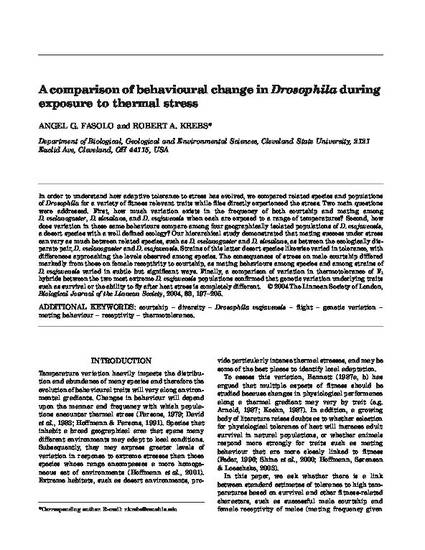
- Biodiversity and
- Biology
In order to understand how adaptive tolerance to stress has evolved, we compared related species and populations of Drosophila for a variety of fitness relevant traits while flies directly experienced the stress. Two main questions were addressed. First, how much variation exists in the frequency of both courtship and mating among D. melanogaster, D. simulans, and D. mojavensis when each are exposed to a range of temperatures? Second, how does variation in these same behaviours compare among four geographically isolated populations of D. mojavensis, a desert species with a well defined ecology? Our hierarchical study demonstrated that mating success under stress can vary as much between related species, such as D. melanogaster and D. simulans, as between the ecologically disparate pair, D. melanogaster and D. mojavensis. Strains of this latter desert species likewise varied in tolerance, with differences approaching the levels observed among species. The consequences of stress on male courtship differed markedly from those on female receptivity to courtship, as mating behaviours among species and among strains of D. mojavensis varied in subtle but significant ways. Finally, a comparison of variation in thermotolerance of F1 hybrids between the two most extreme D. mojavensis populations confirmed that genetic variation underlying traits such as survival or the ability to fly after heat stress is completely different.
